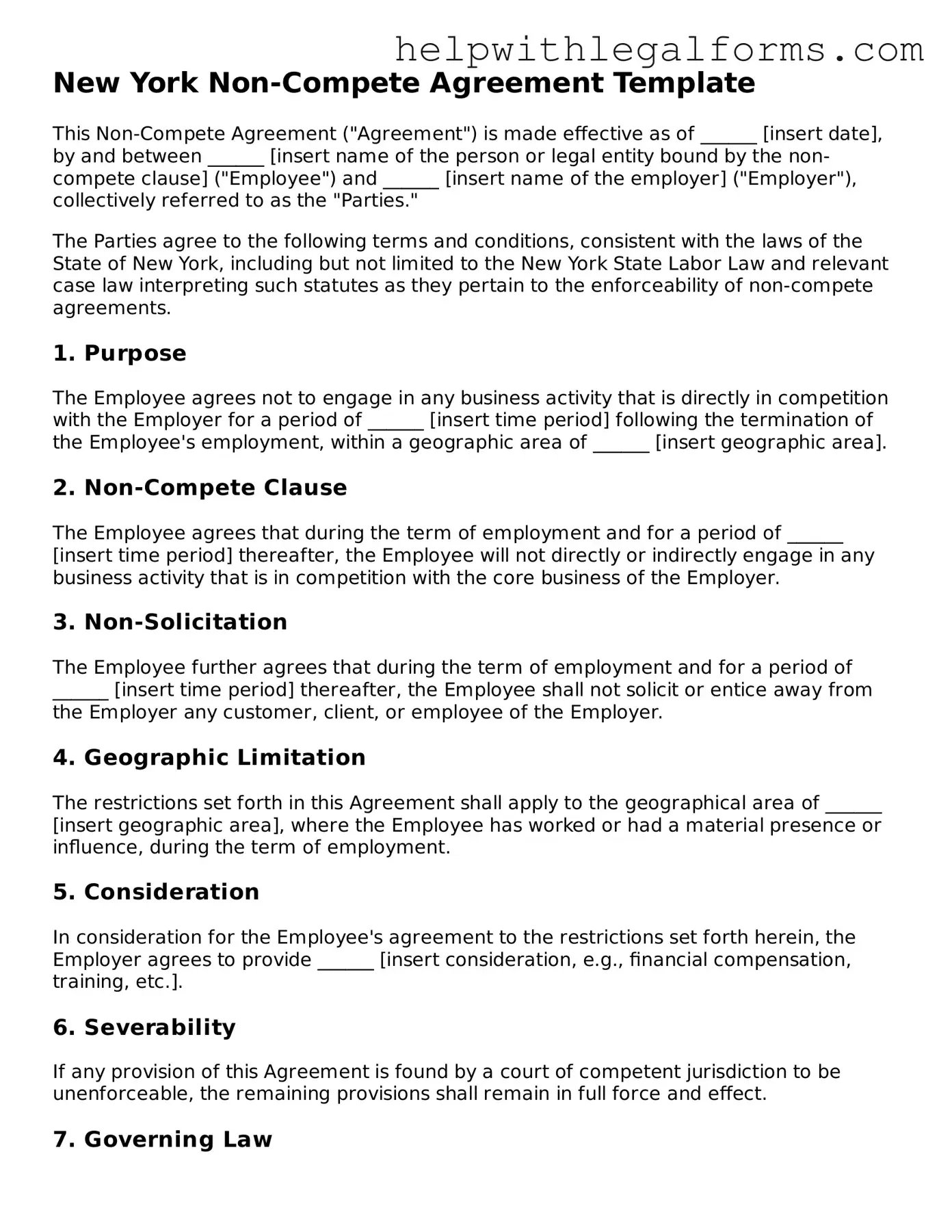New York Non-Compete Agreement Template
This Non-Compete Agreement ("Agreement") is made effective as of ______ [insert date], by and between ______ [insert name of the person or legal entity bound by the non-compete clause] ("Employee") and ______ [insert name of the employer] ("Employer"), collectively referred to as the "Parties."
The Parties agree to the following terms and conditions, consistent with the laws of the State of New York, including but not limited to the New York State Labor Law and relevant case law interpreting such statutes as they pertain to the enforceability of non-compete agreements.
1. Purpose
The Employee agrees not to engage in any business activity that is directly in competition with the Employer for a period of ______ [insert time period] following the termination of the Employee's employment, within a geographic area of ______ [insert geographic area].
2. Non-Compete Clause
The Employee agrees that during the term of employment and for a period of ______ [insert time period] thereafter, the Employee will not directly or indirectly engage in any business activity that is in competition with the core business of the Employer.
3. Non-Solicitation
The Employee further agrees that during the term of employment and for a period of ______ [insert time period] thereafter, the Employee shall not solicit or entice away from the Employer any customer, client, or employee of the Employer.
4. Geographic Limitation
The restrictions set forth in this Agreement shall apply to the geographical area of ______ [insert geographic area], where the Employee has worked or had a material presence or influence, during the term of employment.
5. Consideration
In consideration for the Employee's agreement to the restrictions set forth herein, the Employer agrees to provide ______ [insert consideration, e.g., financial compensation, training, etc.].
6. Severability
If any provision of this Agreement is found by a court of competent jurisdiction to be unenforceable, the remaining provisions shall remain in full force and effect.
7. Governing Law
This Agreement shall be governed by the laws of the State of New York.
8. Entire Agreement
This Agreement constitutes the entire agreement between the Parties regarding the subject matter hereof and supersedes all prior or contemporaneous understandings, agreements, negotiations, representations, and warranties, both written and oral, regarding such subject matter.
9. Modification
This Agreement may only be amended or modified by a written document executed by both Parties.
10. Acknowledgment
The Employee acknowledges that they have had sufficient time to review and consider this Agreement thoroughly and have had the opportunity to consult with an attorney of their own choosing prior to signing.
IN WITNESS WHEREOF, the Parties have executed this Agreement as of the date first above written.
Employee Signature: ___________________________ Date: ______
Employer Signature: ___________________________ Date: ______
